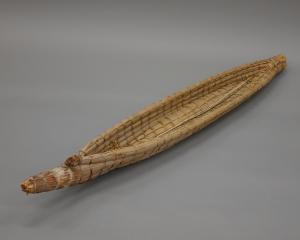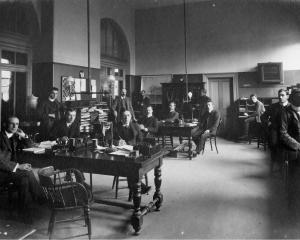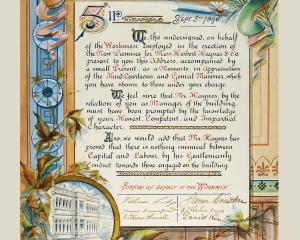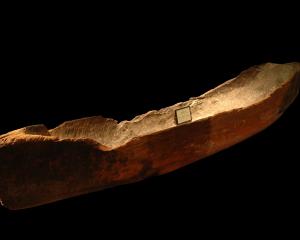Jenny Longstaff examines the pair of Japanese ramma panels in the Great Hall at Olveston.
A pair of Japanese ramma panels are a feature of the Theomin family's oriental collection in Olveston.
They are placed above two doorways in the Great Hall, a location simulating their original architectural use as pierced ventilation transoms (although Olveston's examples have been modified with the addition of silk backings).
The traditional wood carving art on ramma panels - sometimes brightly coloured, sometimes plain - ranges from simple slatted or geometric trellis designs to more figurative ones featuring plants and animals or landscapes.
Different plants, insects, animals, fish and so on each carry their own meaning, as symbolism plays a large part in Japanese culture.
The Olveston panels have gilt-painted, carved depictions of peony flowers and the mythical Ho-o bird, the Japanese phoenix.
When the Chinese introduced Japan to the tree peony, in the Nara period (710-794), it became a popular motif, as the Japanese, too, considered it to be ''the king of the flowers'', representing good fortune, high honour and the season of spring.
In China, and then in Japan, the phoenix was adopted as a symbol of the imperial household, particularly representing power sent from the heavens to the empress.
Since ancient times the massive bird has been regarded as a good luck omen, a messenger of goodwill, while also representing the Confucian virtues of loyalty, honesty, decorum and justice.
As is common in East Asia, the phoenix is a sunbird.
The sun is often represented in their art as a bird.
It is not known how, where or when the Theomins acquired their ramma panels, but they may have visited Chicago in 1893 for the World's Columbian Exposition and seen the four beautiful panels in the Phoenix Hall of the Japanese pavilion and thought, ''How gorgeous, we'd like a couple of those for Dunedin.''
The ones they have are a lot simpler than the complex artistry of the pavilion's carved wooden panels, which were modelled on details from an 11th-century temple outside Kyoto.
Architect Frank Lloyd Wright was another fair-goer greatly impressed by the pavilion's decorative elements.
The Phoenix Hall was given to Chicago but a couple of suspicious fires necessitated its demolition.
A sad tale of neglect followed and the ramma panels were stored and forgotten.
Eventually they were rediscovered in 1973, reunited, repaired and redisplayed in 2011 at the Art Institute of Chicago, to an appreciative public.
Collections and conservation are crucial in safeguarding artistic and architectural heritage.
• Jenny Longstaff is a housekeeper and tour guide at Olveston. Cool and Collected runs fortnightly, sharing stories from the collections of Otago Museum, Toitu Otago Settlers Museum, Dunedin Public Art Gallery and Olveston.












